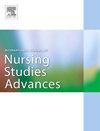医患互动质量量表中文版的翻译与验证
IF 3.1
Q1 NURSING
International Journal of Nursing Studies Advances
Pub Date : 2025-06-21
DOI:10.1016/j.ijnsa.2025.100369
引用次数: 0
摘要
背景:虽然门诊医患互动的重要性日益被认识到,但在中国大陆仍然缺乏有效的工具来评估这些互动。这一差距限制了我们对门诊医患互动的细微差别的理解。目的将《医患互动质量调查问卷》(QQPPI)翻译成中文,并验证其在评估门诊医患互动质量方面的有效性。方法采用方便抽样的方法,对466例门诊患者进行调查,分4个阶段进行:(1)翻译和反翻译,开发中文版的QQPPI (QQPPI- c);(2)文化和语境相关性的专家评审;(3)心理测量验证,对140名被试进行探索性因子分析,对326名被试进行验证性因子分析、测量不变性和收敛效度分析;(4)利用Cronbach’s α和Guttman’s λ₄进行内部一致性评价。结果466例患者(平均年龄48.89±14.93岁;50.2%男性),140名随机分配进行探索性因素分析,支持一维量表结构,解释52.12%的方差。其余326名参与者进行验证性因子分析和其他效度评估。验证性因子分析表明,模型拟合良好(χ²/df = 2.338,近似均方根误差= 0.064,增量拟合指数= 0.937,比较拟合指数= 0.963,Tucker-Lewis指数= 0.955,均方根残差= 0.031)。该量表具有良好的内部一致性(Cronbach’s α = 0.939, Guttman’s λ₄= 0.940)、较高的内容效度(量表水平内容效度指数= 0.968)、足够的收敛效度和跨性别的测量不变性。结论QQPPI-C是评估中国门诊医患互动质量的可靠、有效的工具。它的使用可以支持临床沟通的改善和以患者为中心的护理研究。本文章由计算机程序翻译,如有差异,请以英文原文为准。
Translation and validation of the Chinese version of quality of physician-patient interaction scale
Background
While the importance of outpatient physician-patient interaction is increasingly recognized, there remains a lack of effective tools to assess these interactions in mainland China. This gap limits our understanding of the nuances in outpatient physician-patient interactions.
Objective
This study aimed to translate the Questionnaire on the Quality of Physician-Patient Interaction (QQPPI) into Chinese and validate its effectiveness in assessing the quality of outpatient physician-patient interactions.
Methods
This study recruited 466 outpatients using convenience sampling and was conducted in four phases: (1) translation and back-translation to develop the Chinese version of the QQPPI (QQPPI-C); (2) expert review for cultural and contextual relevance; (3) psychometric validation, including exploratory factor analysis on 140 participants and confirmatory factor analysis, measurement invariance, and convergent validity on the remaining 326; and (4) internal consistency assessment using Cronbach’s α and Guttman’s λ₄.
Results
Among the 466 participants (mean age 48.89 ± 14.93 years; 50.2 % male), 140 were randomly assigned for exploratory factor analysis, which supported a unidimensional scale structure explaining 52.12 % of the variance. The remaining 326 participants were used for confirmatory factor analysis and other validity assessments. confirmatory factor analysis indicated good model fit (χ²/df = 2.338, Root Mean Square Error of Approximation = 0.064, Incremental Fit Index = 0.937, Comparative Fit Index = 0.963, Tucker-Lewis Index = 0.955, and Root Mean Square Residual = 0.031). The QQPPI-C showed excellent internal consistency (Cronbach’s α = 0.939, Guttman’s λ₄= 0.940), high content validity (scale-level content validity index = 0.968), adequate convergent validity, and measurement invariance across genders.
Conclusions
The QQPPI-C is a reliable and valid tool for assessing outpatient physician-patient interaction quality in China. Its use can support clinical communication improvement and research on patient-centered care.
求助全文
通过发布文献求助,成功后即可免费获取论文全文。
去求助
来源期刊

International Journal of Nursing Studies Advances
Nursing-General Nursing
CiteScore
5.80
自引率
0.00%
发文量
45
审稿时长
81 days
 求助内容:
求助内容: 应助结果提醒方式:
应助结果提醒方式:


